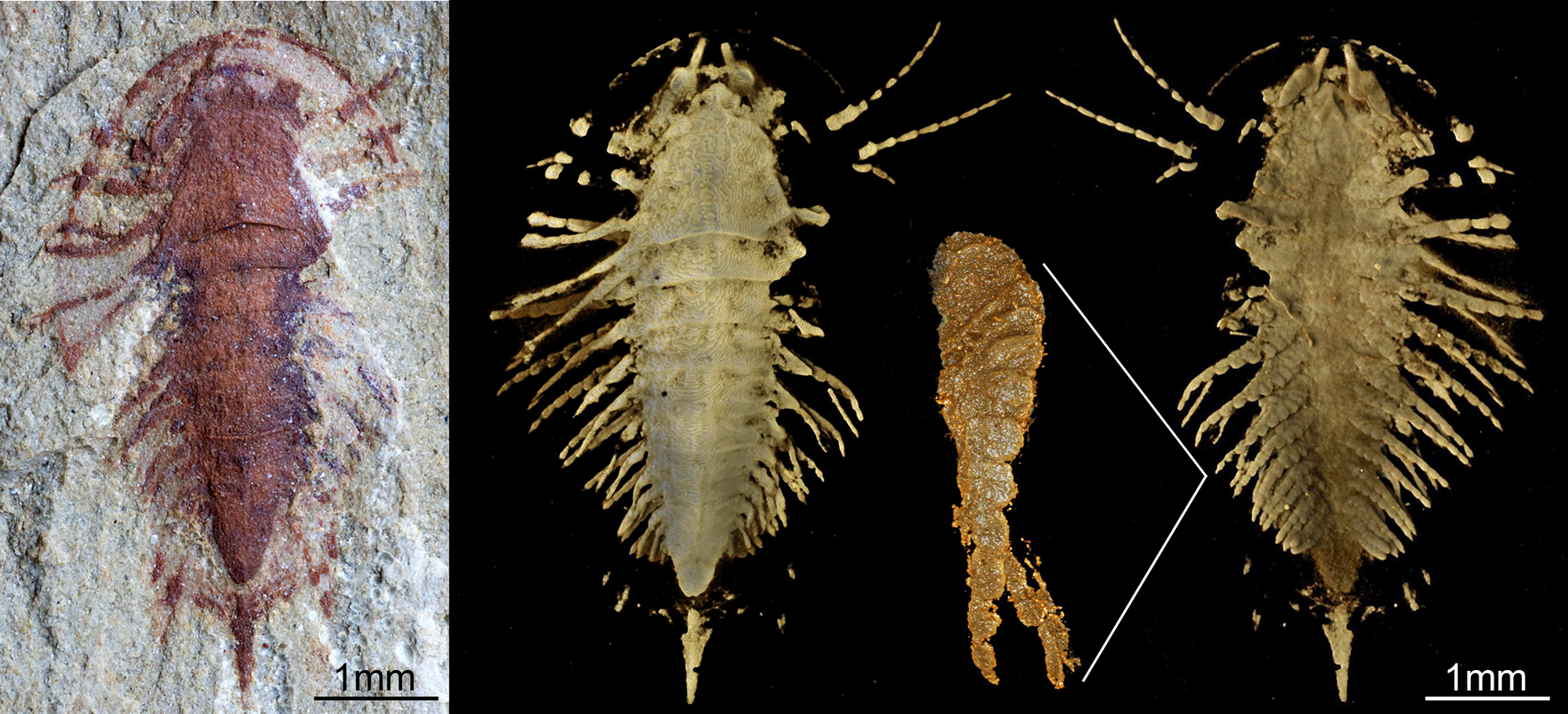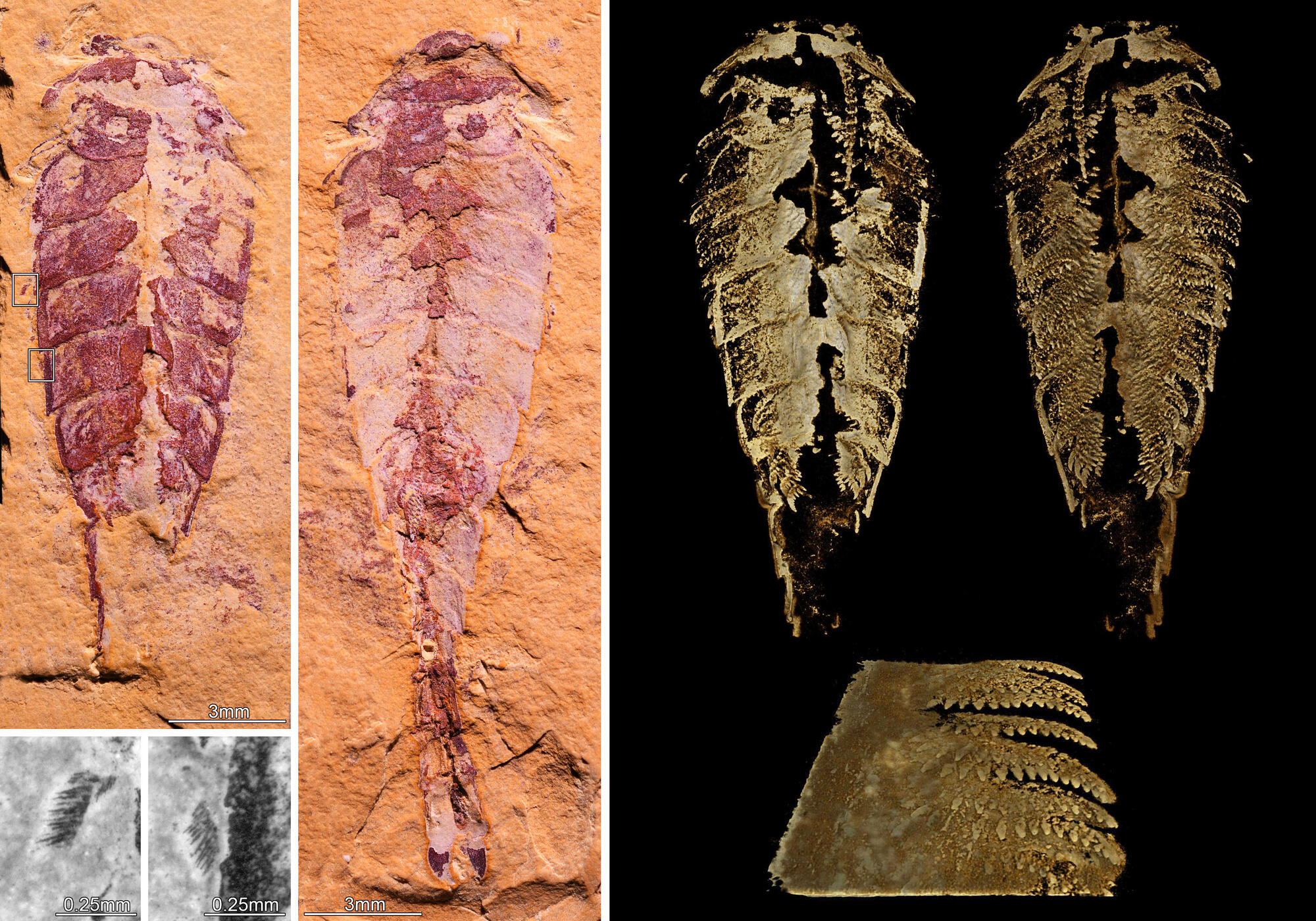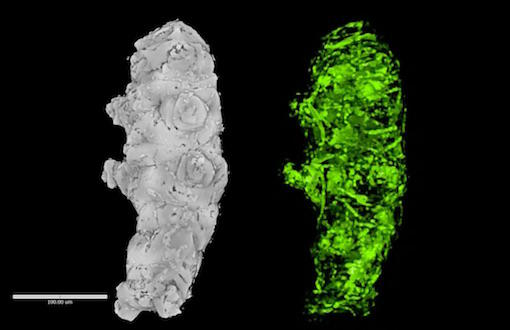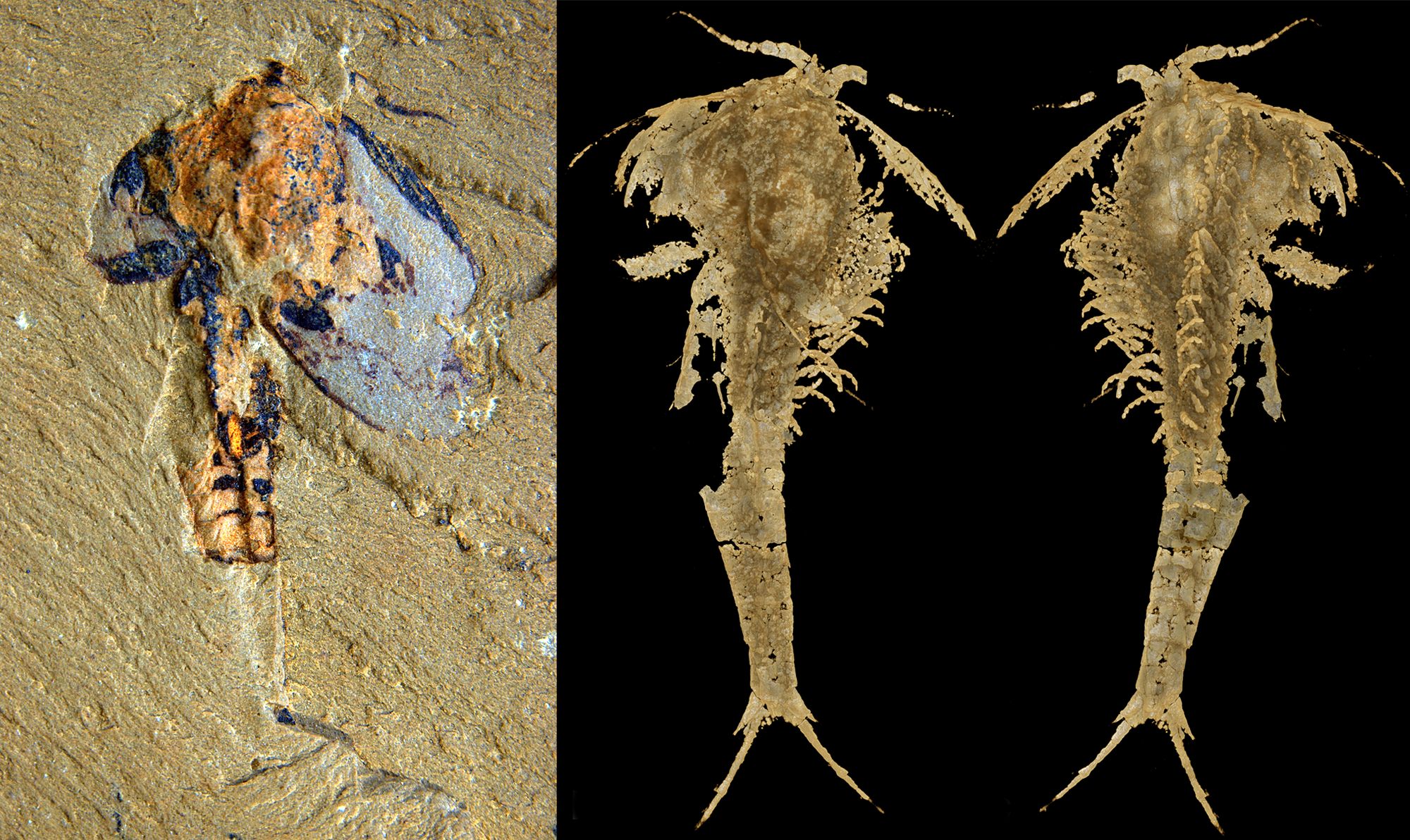Our group has a growing interest in the application of X-ray based micro-computer tomography to study the three dimensionally preserved morphology of extinct invertebrates. Current projects include imaging of flattened soft-bodied fossils from Cambrian and Ordovician deposits, biomineralized taxa preserved as external moulds, and amber collections from the Museum of Comparative Zoology.
The stem-group pancrustacean Ercaicunia multinodosa from the Cambrian (Stage 3) Chengjiang biota in South China. Computer tomography reveals phylogenetically informative morphological details of the appendicular organization that are otherwise concealed by the rock matrix - Zhai, Ortega–Hernández, et al. 2019. Current Biology 29, 171-177. Click HERE to access an interactive 3D model of Ercaicunia hosted in Sketchfab.

The non-biomineralized trilobitomorph artiopodan Sinoburius lunaris from the Cambrian (Stage 3) Chengjiang biota in South China. Thanks to computer tomography it is possible to study the delicate structure of the ventral appendages and obtain a better understanding of the morphology and ecology of this enigmatic euarthropod - Chen, Ortega–Hernández, et al. 2019. BMC Evolutionary Biology 19: 165. Click HERE to access an interactive 3D model of Sinoburius hosted in Sketchfab.

Xiaocaris luoi (Luo's small arthropod) from the early Cambrian (Stage 3) Chengjiang biota in South China. Originally assigned to the enigmatic fossil Jianshania furcatus Luo, computer tomography revealed important details of the exoskeletal organization and ventral limbs that indicate an affiniy with fuxianhuiids, an important clade of stem-group euarthropods that are only known from early Cambrian deposits in China. Unlike other fuxianhuiids, the limbs of Xiaocaris luoi bear numerous strong spines that suggest a macrophagous diet on soft food items - Liu, Ortega–Hernández, et al. 2020 BMC Evolutionary Biology 20: 62 - Work supported by the Harvard China Fund.

Three-dimensional model of the Cretaceous tardigrade Beorn leggi preserved in Canadian amber, produced through phase contrast computer tomography (Image by Javier Ortega–Hernández and Russell Garwood).
Representative publications:
- Schmidt, M., Hou, X., Zhai, D., Mai, H., Belojević, J., Chen, X., Melzer, R.R., Ortega-Hernández, J. and Liu, Y., 2022. Before trilobite legs: Pygmaclypeatus daziensis reconsidered and the ancestral appendicular organization of Cambrian artiopods. Philosophical Transactions of the Royal Society B, 377(1847), p.20210030.
- Liu, Y., Ortega–Hernández, J., Zhai, D., and Hou, X.G. 2020. A reduced labrum in a Cambrian great-appendage euarthropod. Current Biology 30: 3057-3061.
- Liu, Y., Ortega–Hernández, J., Chen, H., Mai, H., Zhai, D., and Hou, X.G. 2020. Computer tomography sheds new light on the affinities of the enigmatic euarthropod Jianshania furcatus from the early Cambrian Chengjiang biota. BMC Evolutionary Biology 20: 62, 1-17.
- Chen, X., Ortega–Hernández, J., Wolfe, J. M., Zhai, D., Huijian, M., Hou, X.G., Chen, A. & Liu, Y. 2019. The appendicular morphology of Sinoburius lunaris and the evolution of the artiopodan clade Xandarellida (Euarthropoda, early Cambrian) from South China. BMC Evolutionary Biology 19, 1-20.
- Zhai, D., Ortega–Hernández, J., Wolfe, J. M., Hou, X.G., Cao, C.J. & Liu, Y. 2019. Three-dimensionally preserved appendages in an early Cambrian stem-group pancrustacean. Current Biology 29, 171-177.

